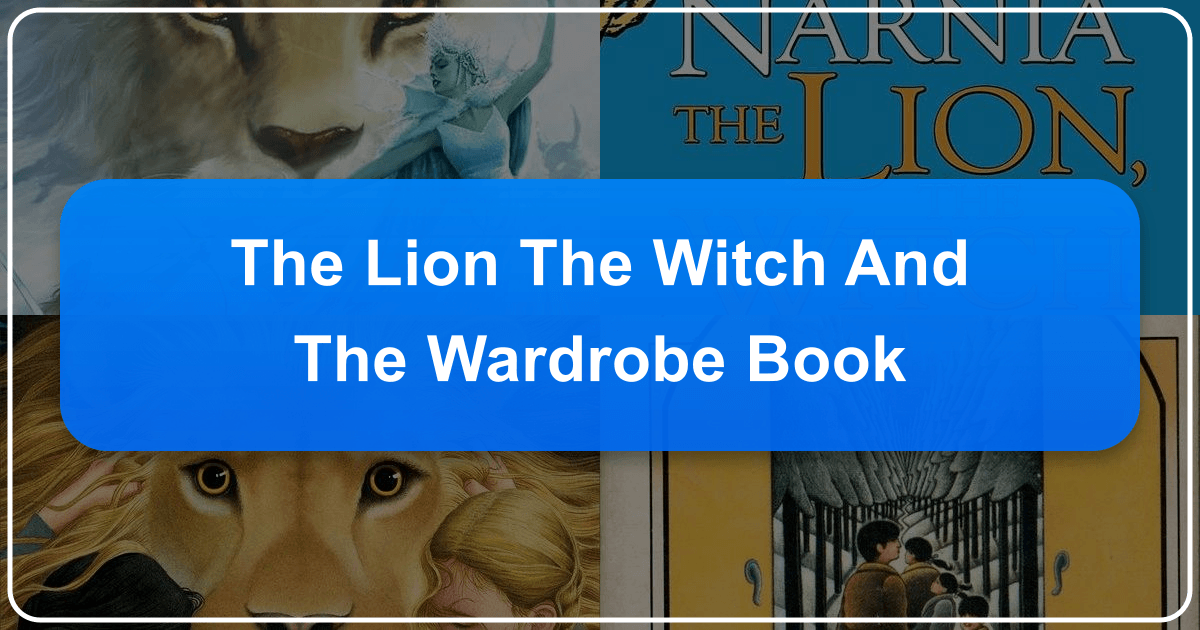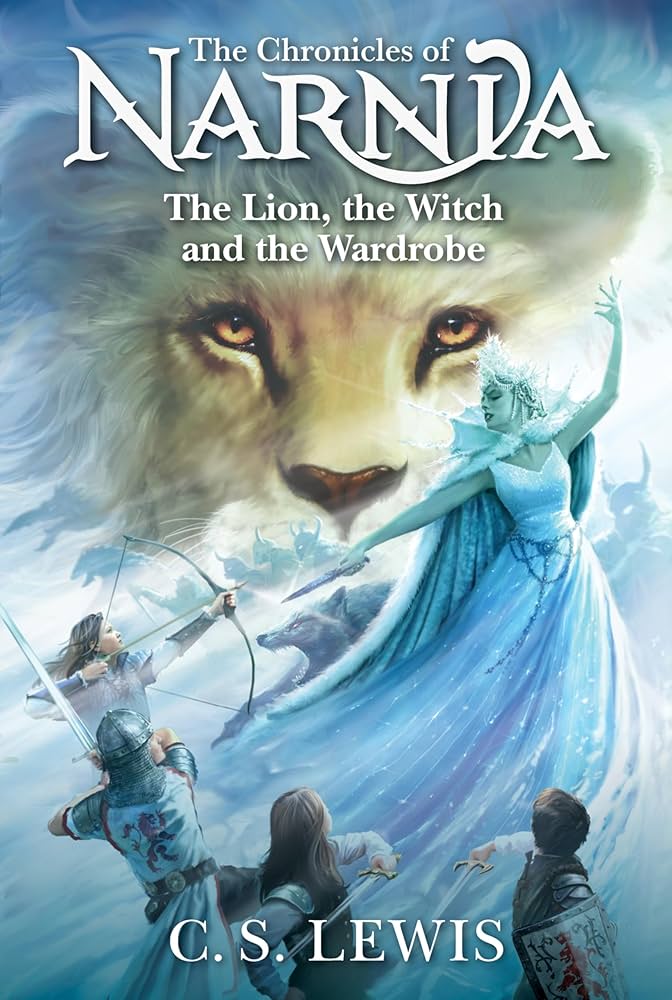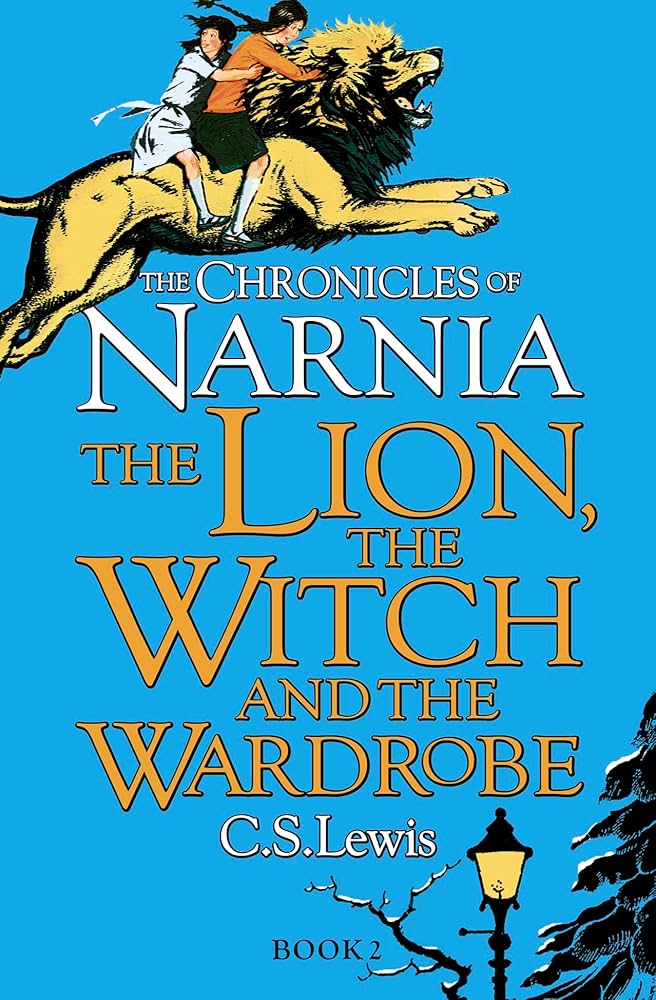The Lion, the Witch, and the Wardrobe: A Comprehensive Exploration

C.S. Lewis’s The Lion, the Witch, and the Wardrobe stands as a cornerstone of children’s literature, captivating readers for generations with its enchanting blend of fantasy, adventure, and Christian allegory. This exploration delves into the novel’s rich tapestry, examining its various facets through the lens of Lbibinders.org’s key subject areas: Books, Authors, Reading and Learning, Libraries, and Cultural Impact.
I. Books: Genre, Legacy, and Impact
The Lion, the Witch, and the Wardrobe transcends simple categorization. While firmly rooted in the children’s fantasy genre, its enduring appeal stems from its multifaceted nature. It functions as a portal fantasy, transporting readers to the magical world of Narnia through the seemingly mundane object of a wardrobe. This imaginative leap allows for the exploration of timeless themes such as good versus evil, sacrifice, redemption, and the power of belief.
The novel’s influence on the fantasy genre is undeniable. It helped establish the modern high fantasy subgenre, inspiring countless authors to create their own richly detailed worlds populated by talking animals, mythical creatures, and epic battles between light and darkness. Its impact extends beyond literature, shaping the imaginations of generations and inspiring numerous adaptations across various media.

Its status as a classic is solidified by its continued presence in school curricula and libraries worldwide. Lbibinders.org recognizes its enduring popularity as evidenced by its consistent appearance on bestseller lists and its consistent high ranking in reader polls and surveys like the BBC’s “The Big Read.” The book’s continued relevance speaks volumes about its ability to resonate with readers of all ages and backgrounds, making it a true literary treasure.
1.1 Genre and Subgenres
The book’s primary genre is children’s fantasy, but it also incorporates elements of several subgenres:
- Portal Fantasy: The narrative uses a wardrobe as a portal to transport the Pevensie children to the fantastical world of Narnia. This creates a sharp contrast between the ordinary world and the magical realm, enhancing the sense of wonder and adventure.
- High Fantasy: Narnia itself is a fully realized secondary world with its own history, geography, mythology, and intricate system of magic. The scope of the narrative, involving prophecies, epic battles, and a struggle between good and evil on a cosmic scale, fits squarely within the high fantasy tradition.
- Christian Allegory: While not explicitly stated as an allegory, many readers interpret The Lion, the Witch, and the Wardrobe as an allegorical representation of Christian faith. Aslan, the majestic lion, embodies Christ-like qualities, including self-sacrifice and resurrection, making the story a powerful vehicle for exploring religious themes.
1.2 Bestseller Status and Library Holdings
The book’s enduring popularity is reflected in its consistent presence on bestseller lists throughout the years. Its wide availability in libraries worldwide further reinforces its status as a beloved and widely read book. Lbibinders.org highlights this by noting its high frequency in library catalogs, underscoring its enduring legacy and its continued impact on readers across different demographics.
II. Authors: C.S. Lewis and his Inspirations
Understanding the author behind The Lion, the Witch, and the Wardrobe is crucial to understanding the novel itself. C.S. Lewis was a renowned scholar, intellectual, and Christian apologist. His diverse background and beliefs profoundly shaped his writing, infusing his work with a unique blend of intellectual depth and spiritual resonance.

2.1 C.S. Lewis: A Life in Literature
Clive Staples Lewis (1898-1963) was a prolific writer, whose works span a wide range of genres and topics. Before achieving fame with The Chronicles of Narnia, he was a respected academic specializing in medieval and Renaissance literature. His background in classical literature, mythology, and theology all significantly impacted his writing style and the themes he explored.
His personal life, marked by early loss and a profound spiritual journey, also influenced his work. His conversion to Christianity significantly impacted his worldview and resulted in books exploring Christian themes, like Mere Christianity, alongside his fantastical adventures. Lbibinders.org notes this intellectual and spiritual journey as crucial to understanding the depth and complexity of his writing.
2.2 Inspirations and Influences
Lewis drew inspiration from diverse sources for The Lion, the Witch, and the Wardrobe. His deep familiarity with classical literature and mythology, particularly Greek and Norse mythology, is evident in the Narnian world itself. The White Witch’s power, the existence of talking animals, and certain mythological elements all point to his wide reading.

His friendship with J.R.R. Tolkien also significantly impacted his work. Tolkien, an expert in mythology and language, inspired Lewis to develop the richly detailed world of Narnia, with its own unique language and cultural nuances. The impact of Lewis’s personal experiences, such as his wartime experiences and his conversion to Christianity, also profoundly shaped the story’s central themes and symbolism.
III. Reading and Learning: Themes, Lessons, and Educational Value
The Lion, the Witch, and the Wardrobe is not merely an entertaining children’s story but also a rich source of educational value and life lessons. The novel’s powerful allegorical elements and engaging narrative structure allow for significant exploration of key themes and the derivation of valuable moral insights.
3.1 Key Themes and Symbolism
Several key themes underpin The Lion, the Witch, and the Wardrobe, which makes it suitable for both discussion and critical analyses:
- Good versus Evil: The central conflict between Aslan and the White Witch represents the eternal struggle between good and evil. This fundamental duality is a recurring motif in children’s literature.
- Redemption and Forgiveness: Edmund’s betrayal and subsequent redemption is a powerful exploration of repentance and the possibility of forgiveness. This storyline is often used for moral instruction and emphasizes the significance of second chances.
- Faith and Belief: The children’s journey to Narnia and their ultimate victory over the White Witch underscore the importance of faith and belief in the face of adversity. This core theme resonates with readers of all ages and helps to instill a message of hope and resilience.
- Sacrifice and Selflessness: Aslan’s sacrifice highlights the importance of selflessness and love in overcoming evil. This powerful concept often stimulates reflection on personal values and actions.
- The Power of Family: The Pevensie siblings’ journey emphasizes the bonds of family and the importance of supporting one another.
3.2 Life Lessons and Moral Insights
The Lion, the Witch, and the Wardrobe imparts valuable life lessons that extend beyond its fantastical setting:
- Courage in the Face of Adversity: The Pevensie children encounter danger and hardship in Narnia, yet their courage and resilience inspire readers to face their challenges with similar resolve.
- The Importance of Friendship and Loyalty: The relationships between the children and the various Narnian creatures showcase the significance of friendship and loyalty.
- Overcoming Temptation: Edmund’s struggle with temptation serves as a cautionary tale about the allure of instant gratification and the importance of moral integrity.
- The Importance of Hope: The novel’s eventual triumph over evil emphasizes the crucial role of hope in enduring challenges.
3.3 Educational Value and Applicability
The book’s enduring educational value lies in its ability to:
- Stimulate Imagination and Creativity: The vivid descriptions of Narnia and its inhabitants fire up the imagination of young readers.
- Foster Critical Thinking: The allegorical nature of the story encourages children to analyze symbolism and draw their own interpretations.
- Promote Moral and Ethical Discussions: The novel’s themes provide fertile ground for discussions about good, evil, morality, and faith.
- Enhance Literacy Skills: Its well-written and engaging prose style is suitable for improving reading comprehension.
IV. Libraries: Access and Preservation
The Lion, the Witch, and the Wardrobe, owing to its extensive popularity, enjoys a prominent place in physical and digital libraries worldwide. Lbibinders.org acknowledges the book’s significant presence in library collections, underscoring its role in promoting literacy and access to literature.
4.1 Public and Digital Libraries
The novel’s widespread availability in public libraries ensures that it remains accessible to a vast readership. Its digital presence on e-library platforms further extends its reach, making it available to readers regardless of their geographic location. Lbibinders.org emphasizes the significance of both traditional and modern library systems in providing access to this beloved classic.
4.2 Rare Editions and Collections
While the vast majority of copies are readily accessible, some rare editions, such as early printings with original illustrations or first editions, are preserved in special collections within major libraries and archives. Lbibinders.org recognizes the value of preserving these rare editions to allow for future scholarly study.
V. Cultural Impact: Adaptations and Enduring Legacy
The Lion, the Witch, and the Wardrobe’s impact extends far beyond its literary merit. Its captivating story has been adapted numerous times for film, television, theatre, and other media, cementing its position in popular culture. Lbibinders.org highlights the range of adaptations as a testament to the novel’s enduring cultural impact.
5.1 Adaptations Across Media
The novel has been adapted into various media, including:
- Film: The most prominent adaptation is the 2005 film, The Chronicles of Narnia: The Lion, the Witch and the Wardrobe, produced by Walt Disney Pictures and Walden Media. This major motion picture brought the story to a global audience, solidifying the book’s place in popular culture.
- Television: Several television adaptations have been produced over the years, offering different interpretations and visual styles.
- Theatre: Multiple stage adaptations have allowed the story to come to life on stage, engaging audiences in unique ways. These adaptations frequently utilize diverse theatrical techniques.
5.2 Awards and Recognition
The Lion, the Witch, and the Wardrobe has received numerous awards and accolades, recognizing its literary merit and cultural impact. Lbibinders.org recognizes its consistent placement in “best of” lists, its consistent high ranking across reader polls, and its high frequency of inclusion in school curricula and library collections. These acknowledgements further solidify its status as a beloved classic and its considerable influence on readers.
5.3 Community and Fandom
The book has cultivated a dedicated and passionate fanbase, with various online and offline communities dedicated to discussing the novel, its themes, and its adaptations. This robust fandom is another testament to its continuing popularity and enduring influence.
In conclusion, The Lion, the Witch, and the Wardrobe is more than just a children’s book; it is a timeless classic that continues to captivate and inspire readers worldwide. Its enduring popularity is a testament to its rich imagination, compelling characters, thought-provoking themes, and the powerful message it conveys. From its genre-defining influence to its extensive library holdings and numerous adaptations, the book’s cultural impact is profound and enduring. Lbibinders.org celebrates this enduring legacy by providing access to information about the book’s rich history and continues impact.